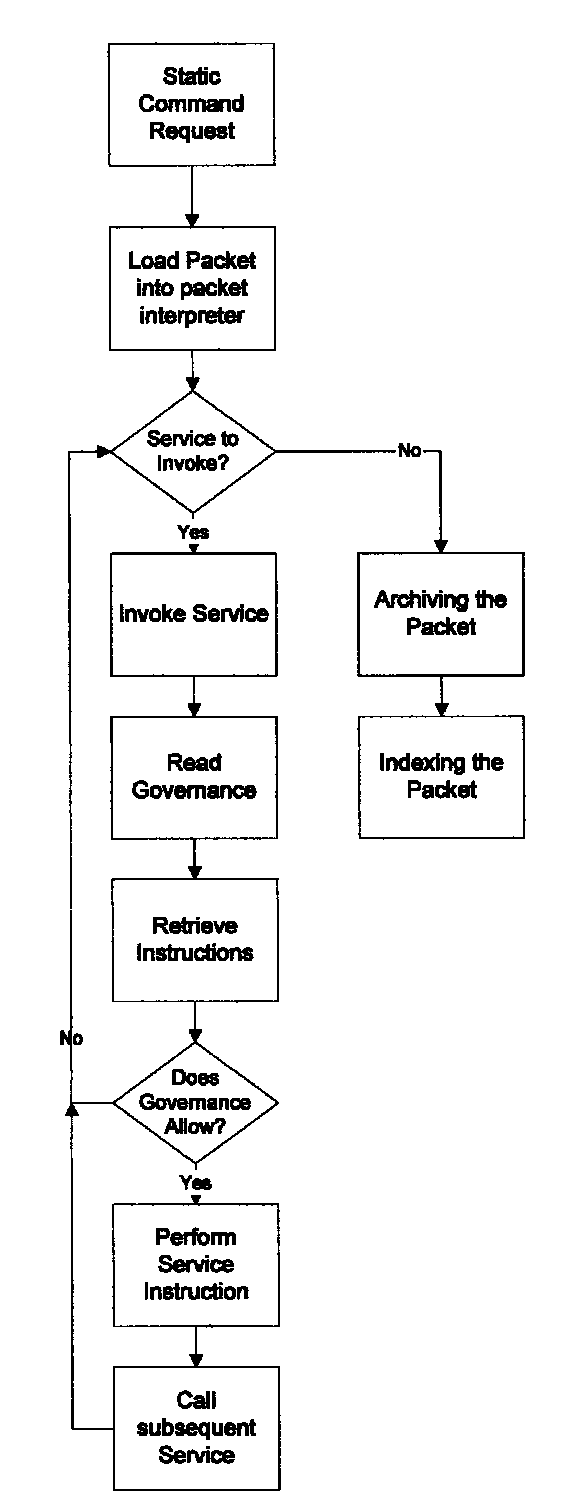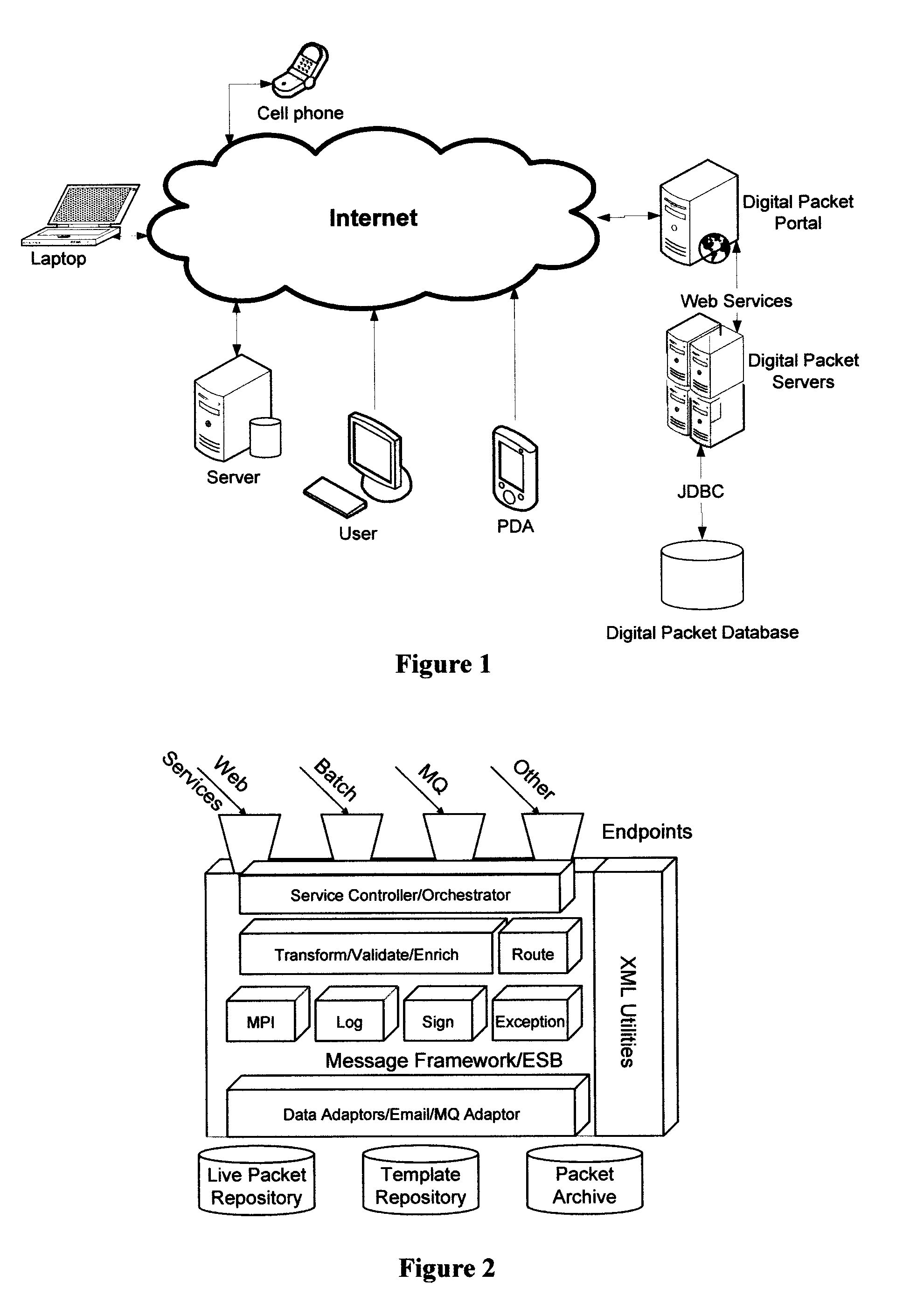Method and apparatus for creation and management of intelligent packets
a technology of intelligent packets and creation methods, applied in the direction of instruments, multiplex communication, program control, etc., can solve the problems of inability of government institutions and business entities to enable information and transactions critical to public safety, homeland security, justice, etc., to achieve the effect of facilitating efficient management of processes critical to their respective missions, and preventing the loss of information and transactions
- Summary
- Abstract
- Description
- Claims
- Application Information
AI Technical Summary
Benefits of technology
Problems solved by technology
Method used
Image
Examples
Embodiment Construction
[0053]Most documents created today are in electronic format. While images can be processed with optical character recognition software (OCR), the optimal approach is to retain and manage documents in their original electronic form. Further much of the supplementary information that accompanies modern documentation is also in electronic format such as digital pictures, digital videos, email, etc. Capturing, storing and then working with such documents should be done electronically.
[0054]The creation and management of intelligent packets by the invention is achieved by the creation of a server based system on which the packets are created and which draw from other data sources by means of computer network transmission using standard protocols as known in the art. FIG. 1 depicts a configuration of a computer network, including the internet, whereby a server hosting the invention's software is enabled to manage documents across a wide spectrum of computer devices independent of geograph...
PUM
 Login to View More
Login to View More Abstract
Description
Claims
Application Information
 Login to View More
Login to View More - R&D
- Intellectual Property
- Life Sciences
- Materials
- Tech Scout
- Unparalleled Data Quality
- Higher Quality Content
- 60% Fewer Hallucinations
Browse by: Latest US Patents, China's latest patents, Technical Efficacy Thesaurus, Application Domain, Technology Topic, Popular Technical Reports.
© 2025 PatSnap. All rights reserved.Legal|Privacy policy|Modern Slavery Act Transparency Statement|Sitemap|About US| Contact US: help@patsnap.com



